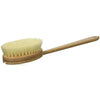Why did the Discovery of Artemisinin Win the Nobel Prize?

Wormwood (A. absinthium)
Absinthe, the infamous emerald elixir known to many as the Green Fairy, is much more than just a strong drink. It's a health-promoting cocktail of history, myth, and artistry. Made from the enigmatic Artemisia absinthium, or wormwood, this potent spirit reached the height of its popularity in the late 1800s and early 1900s.
Absinthe's allure wasn't just its strength; it was the mystique of its key ingredient—wormwood oil—that set it apart from other liquors. This oil was thought to be the catalyst for the notorious condition known as "absinthism," a supposed mental affliction characterized by hallucinations. However, modern research suggests that these wild tales of madness were likely just exaggerated accounts of alcoholism.
Originating in the picturesque canton of Neuchâtel in Switzerland in the late eighteenth century, absinthe quickly became the muse of many a Parisian avant-garde. Renowned for its high alcohol content and unique, aromatic flavor, it became a staple of artistic circles, inspiring works of art and literature. Unfortunately, its widespread consumption and the perceived dangers associated with its effects led many countries to ban it.
The impacts of Artemisinin, derived from a species of Artemisia, have been so revolutionary that its discoverers earned the Nobel Prize in Physiology or Medicine in 2015.
Wormwood’s Variety of Activity
Wormwood has exhibited many pharmacological activities, such as being antimicrobial, insecticidal, antiviral, hypoglycemic, hepatoprotective, wound healing, anti-inflammatory, and cardiovascular diseases (1). Moreover, it has shown a broad range of anticancer activities (1)(3).
Anti-Parasitic
Wormwood has been a staple of Dr. Hulda Clark’s protocol, and has been studied extensively for its ability to treat parasitic infections in both animals and humans.
Poultry are common therapeutic targets given the types of parasites they are exposed to, such as the nematode Heterakis gallinarium. This parasite has a 22 day life cycle, but its eggs can be infective for up to four years in the soil, making their presence common in barnyard animals (4). However, wormwood extract was shown to significantly reduce parasite infections and clearance time in poultry (4).
In numerous studies, Arteminisin species have been found to:
- Induce worm paralysis and death
- Destroy intrauterine eggs
- Contain anti-parastitic compounds: sesquiterpene lactone santonin, quercetin and apigenin
Anti-Cancer
In cancer models, artemisinin and its derivatives have anti-cancer effects due to alterations of many cellular signaling pathways. It has been shown to cause growth inhibition by cell cycle arrest, apoptosis, inhibition of angiogenesis, inhibition of cell migration (3). In a controlled clinical trial, Wormwood (Artemisia absinthium) suppresses tumour necrosis factor alpha (2).
Another study tested the in-vitro cytotoxicity of wormwood extract on human prostate (PC-3), breast (MDA-MB-231), pancreatic (PANC-1) and melanoma (A375) cell lines, finding that “action of A. annua phytoconstituents in cancer and suggests this natural product as a potential source for cancer prevention or treatment, making it worthy of clinical application and promotion" (2).
Artemisinin is a small but potent molecule that boasts an endoperoxide moiety that interacts with atomic iron to generate cytotoxic free radicals. Artemisinin targets and eradicates malaria parasites by reacting with heme iron within the parasite. Since cancer cells harbor significantly higher levels of free iron compared to normal cells, they are prime targets for artemisinin's action.
Here’s a short list of further studies showing anti-cancer activity:
- Jiao, Y. et al. (2007) Dihydroartemisinin is an inhibitor of ovarian cancer cell growth. Acta Pharmacologica Sinica 28, 1045-1056
- Sundar, S.N. et al. (2008) Artemisinin selectively decreases functional levels of estrogen receptor-alpha and ablates estrogen-induced proliferation in human breast cancer cells. Carcinogenesis 29, 2252-2258
- Willoughby, J.A. Sr et al. (2009) Artemisinin blocks prostate cancer growth and cell cycle progression by disrupting Sp1 interactions with the cyclin-dependent kinase-4 (CDK4) promoter and inhibiting CDK4 gene expression. Journal of Biological Chemistry 284, 2203-2213
- Dong, L. et al. (1999) Mechanisms of transcriptional activation of bcl-2 gene expression by 17beta-estradiol in breast cancer cells. Journal of Biological Chemistry 274, 32099-32107
- Mu, D. et al. (2008) The role of calcium, P38 MAPK in dihydroartemisinin-induced apoptosis of lung cancer PC-14 cells. Cancer Chemotherapy and Pharmacology 61, 639-645
- Riganti, C. et al. (2009) Artemisinin induces doxorubicin resistance in human colon cancer cells via calcium-dependent activation of HIF-1alpha and P-glycoprotein overexpression. British Journal of Pharmacology 156, 1054-1066
Based on findings from lab and animal studies, as well as current clinical trials, artemisinin-type drugs show incredible promise not just for treating cancer but also for preventing its onset and spread. The research to date highlights an urgent need for large-scale clinical trials to fully explore their potential benefits for human health.
Anti-Viral
Artemisia as a species has repeatedly shown highly effective and promising anti-viral activity, which may explain some of its effects on other diseases caused or exacerbated by viral loads. The mechanisms of inhibiting viral replication and growth, are thought to be the induction of ROS in the viral cell, impairing the PI3K/Akt pathway, or binding to NF-κB/Sp1
Anti-viral pathways also include the suppression of Transforming Growth Factor-beta (TGF-β), which is involved in the cytokine storm and lung fibrosis of CoV-2 and was found to bind to four different spike proteins related to SARS-CoV-2 (5)
Gastrointestinal Disease
Traditional herbalists have used Artemisia absinthium to treat GI discomfort since ancient times. A large amount of research has uncovered the mechanisms to be its anti-bacterial and anti-fungal activities, as we’ve outlined above, since such pathogens and their biofilms are the most common cause of GI disease (6). An in vitro study using ethanol extracts, shown significant inhibitory effects on Candida strains, and showed promising potential to reduce biofilm formation.
In a study on Crohn’s disease, wormwood alleviated symptoms in 90% of patients, with near total remission for the majority after 8 weeks of treatment (2 ). All patients were slowly tapered off of their steroids during this period, and in the placebo group there were no experienced benefits, and no remissions.
Conclusion
Wormwood's medicinal value continues to be confirmed through in vivo and in vitro studies, with researchers developing new network models to ascertain the pathways of its active compoenets for a variety of diseases. Promising results have created immense interest in the chemistry of Artemisia species and the biological punch packed by their extracts and essential oils. Research has spotlighted their impressive array of health benefits, from its anti-cancer, and anti-parasite activity, to protecting the liver and brain. On top of that, properties like antibacterial, antifungal, and antioxidant activities have caught the eye of the cosmetic industry, opening a world of possibilities for innovative products.
Our Wormwood Products:
Dr. Clark's Wormwood Super Blend
Dr. Clark's Wormwood Super Blend (Vegetarian)
References
- Shafi, G.; Hasan, T.N.; Syed, N.A.; Al-Hazzani, A.A.; Alshatwi, A.A.; Jyothi, A.; Munshi, A.Artemisia absinthium (AA): A novel potential complementary and alternative medicine for breast cancer. Mol. Biol. Rep. 2012, 39, 7373–7379
- Omer, B., Krebs, S., Omer, H., & Noor, T. O. (2007). Steroid-sparing effect of wormwood (Artemisia absinthium) in Crohn's disease: a double-blind placebo-controlled study. Phytomedicine, 14(2-3), 87-95.
- Firestone, G. L., & Sundar, S. N. (2009). Anticancer activities of artemisinin and its bioactive derivatives. Expert reviews in molecular medicine, 11, e32.
- Seddiek, S. A., Ali, M. M., Khater, H. F., & El-Shorbagy, M. M. (2011). Anthelmintic activity of the white wormwood, Artemisia herba-alba against Heterakis gallinarum infecting turkey poults. J Med Plants Res, 5(16), 3946-3957.
- Kshirsagar, S. G., & Rao, R. V. (2021). Antiviral and immunomodulation effects of Artemisia. Medicina, 57(3), 217.
- Ivanov, M., Gašić, U., Stojković, D., Kostić, M., Mišić, D., & Soković, M. (2021). New evidence for Artemisia absinthium L. application in gastrointestinal ailments: ethnopharmacology, antimicrobial capacity, cytotoxicity, and phenolic profile. Evidence‐Based Complementary and Alternative Medicine, 2021(1), 9961089.
2 comments

December 15, 2025
Seed Oils – What’s the Big Deal Anyway?
The anti-seed oil crusade has gained momentum in recent years and I am delighted to see awareness of their toxicity spreading. I am particularly passionate about this topic and it sparks a lot of controversy in the wellness and natural ...
Read more
December 14, 2025
Essential Supplements for Keto and Paleo Diets: Bridging the Nutritional Gaps
While keto and paleo diets offer compelling health benefits, they're fundamentally restrictive in ways that create measurable nutritional deficiencies. Unlike omnivorous whole-food diets, these eating patterns eliminate or dramatically ...
Read more
December 14, 2025
TCE Contamination: Why Municipalities Must Strengthen Protections
The safety of municipal water supplies represents one of the most fundamental public health responsibilities facing local governments. In recent years, scientific research has drawn increasing attention to the presence of industrial so...
Read more





Thank you for the reminder about how much wormwood brings to the table. It is effective on so many fronts, I will add back to my regular regimen.
Dr Clark’s work and pioneering of herbal therapy’s have helped me tremendously with Lyme and I am know she has saved or prolonged the lives of many many people, thank you Dr Clark and team
Leave a comment